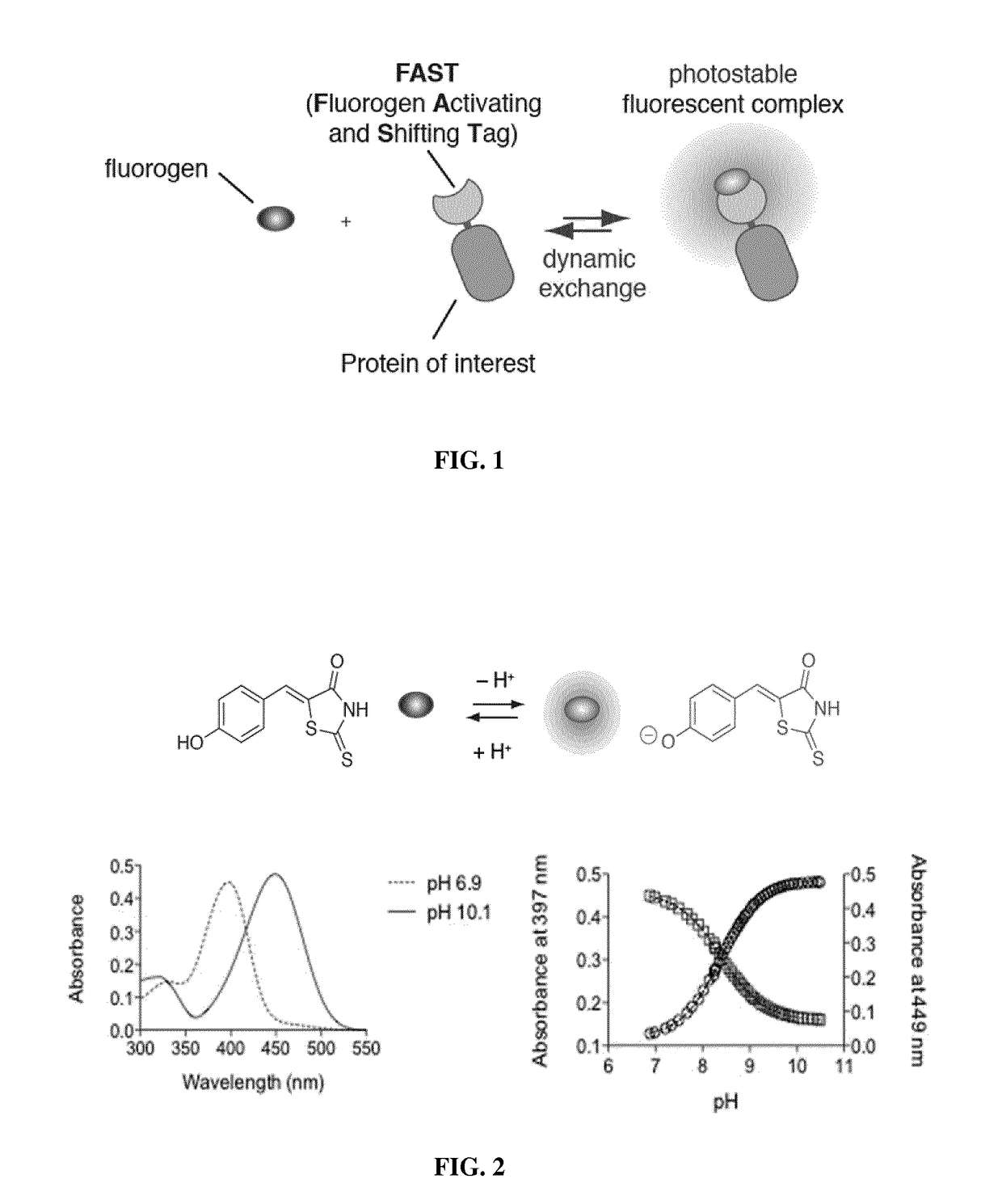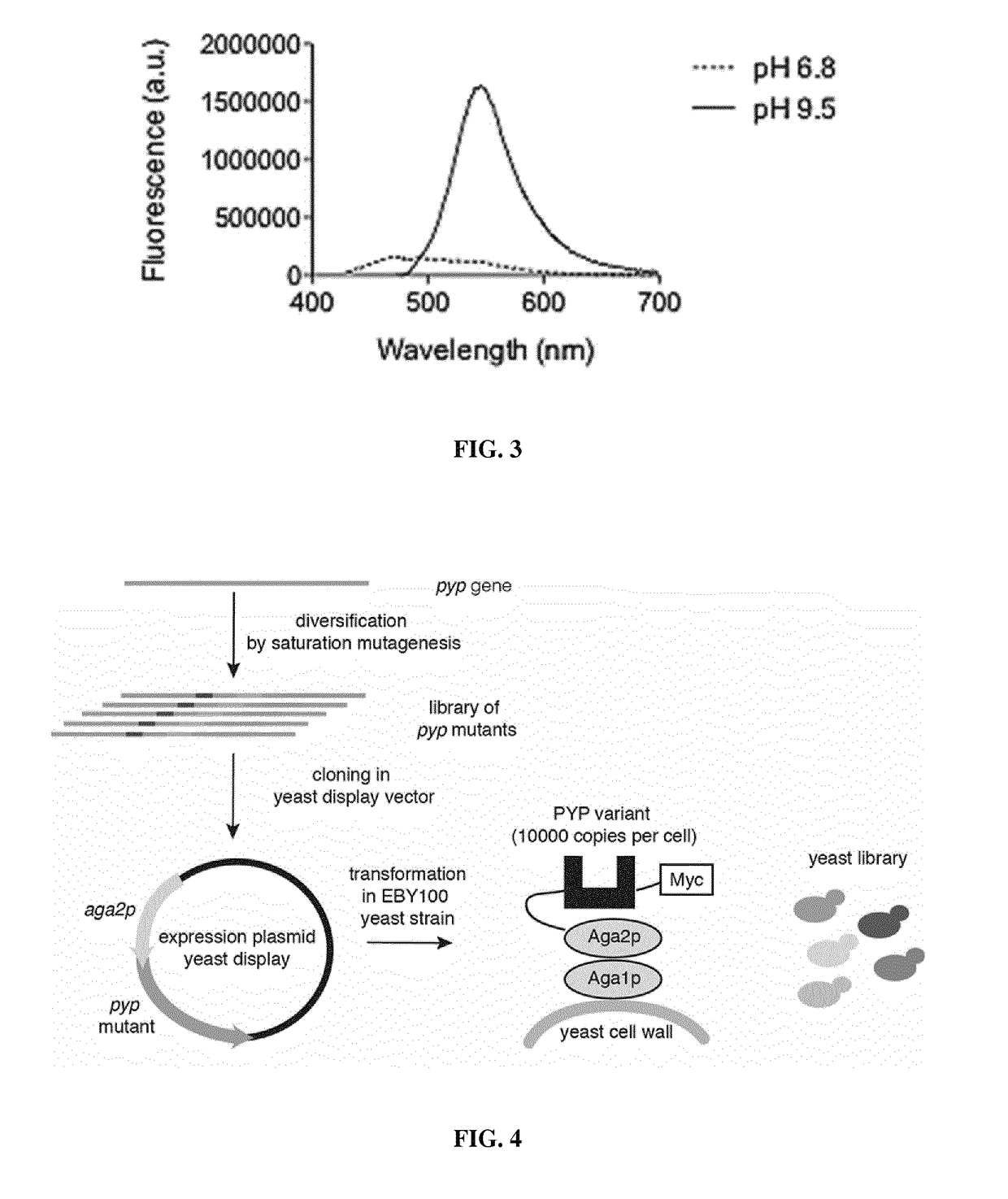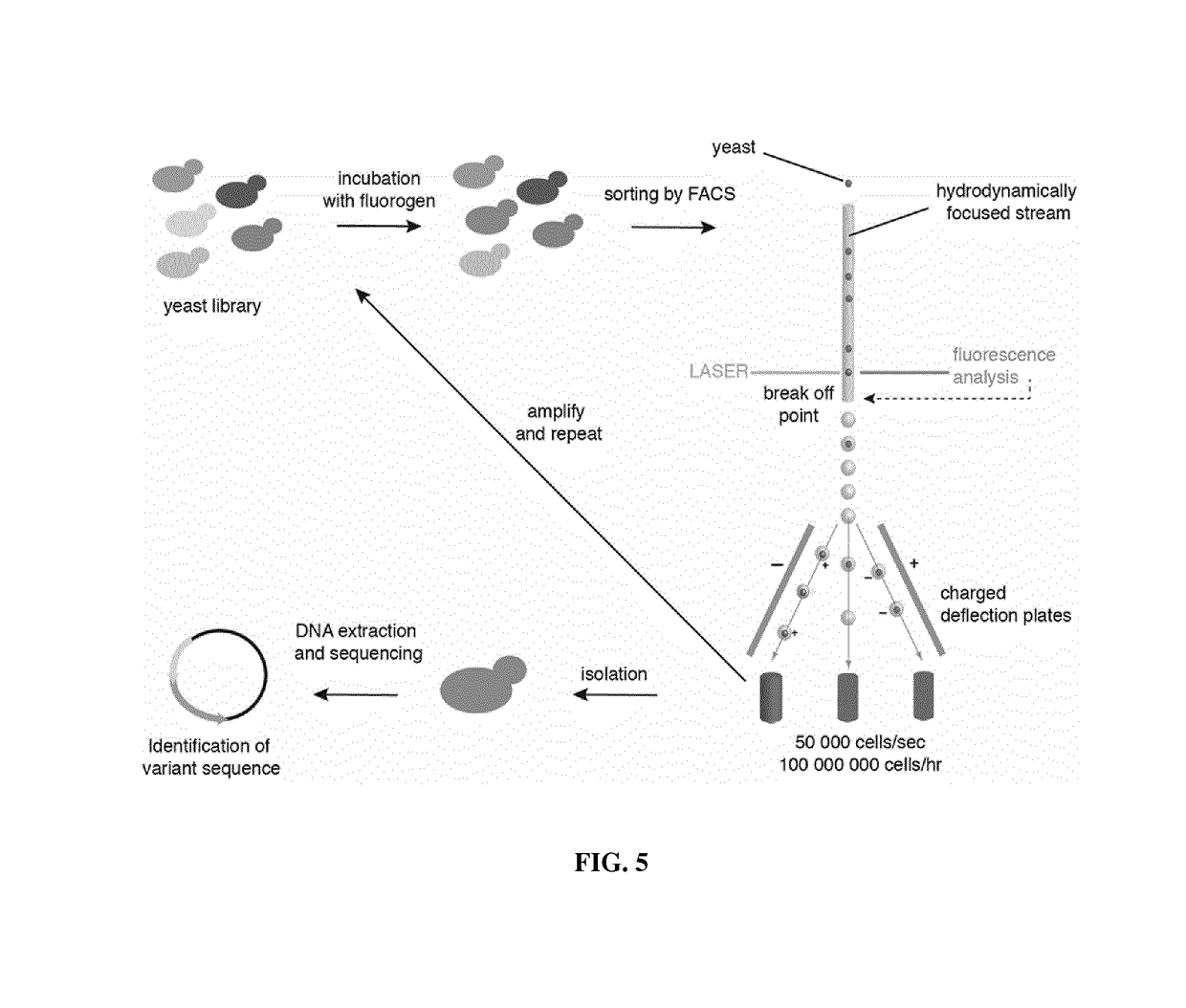Fluorogen activating and shifting tag (FAST)
a fluorescent protein and activating tag technology, applied in the field of fluorescence labelling of proteins, can solve the problems of limiting the use of gfp-like fluorescent proteins in the environment, unable to observe for a long time in fluorescence microscopy, and suffering from several limitations. achieve the effect of avoiding photobleaching
- Summary
- Abstract
- Description
- Claims
- Application Information
AI Technical Summary
Benefits of technology
Problems solved by technology
Method used
Image
Examples
example 1
Design of a New Fluorogenic Chromophore—Identification of HBR
[0322]A fluorogenic chromophore capable to show high fluorescence increase when immobilized in a rigid environment such as a protein cavity, and exhibiting a shifted absorption upon ionization of an auxochromic group was designed.
[0323]It is known in the art that the chromophore of GFP, i.e. parahydroxybenzylidene-5-imidazolinone (p-HBI), displays an extremely weak fluorescence quantum yield when the protein is unfolded, but said fluorescence quantum yield increases by 104-fold in the barrel tertiary protein structure (Heim et al., 1995; Tsien, 1998). Further, the protonated form of p-HBI absorbs at 397 nm while its deprotonated form absorbs at 475 nm. These photophysical properties of p-HBI originate from its typical donor-acceptor conjugated structure, where phenol / phenolate act as electron-donating groups and the imidazolidinone ring acts as the electron-withdrawing group.
[0324]New fluorogenic chromophores were designed...
example 2
Design of PYP Derivatives
[0332]Fluorescent HBR-binding proteins were designed by remodeling the active site of the C69G photoactive yellow protein (PYP) from Halorhodospira halophila of SEQ ID NO: 48.
[0333]PYP is a 14 kDa monomeric disulfide-free blue-light photoreceptor, whose photosensing behavior relies on the photoisomerization of a para-hydroxycinnamoyl (HC) chromophore covalently attached to Cys69. The monomeric state and small size of PYP render this protein very attractive to design a new protein tag.
[0334]A directed evolution strategy of PYP was designed, based on yeast display, for remodeling the chromophore pocket of the apo-PYP-C69G of SEQ ID NO: 48 in order to obtain a cavity able to bind HBR in its basic blue-absorbing state and enhancing its fluorescence. The choice of apo-PYP as starting scaffold was driven by the likeness of the structures of HBR and the natural HC chromophore of PYP. Additionally, as the binding pocket of apo-PYP accommodates the HC chromophore in ...
PUM
| Property | Measurement | Unit |
|---|---|---|
| temperature | aaaaa | aaaaa |
| maturation time | aaaaa | aaaaa |
| dissociation constant | aaaaa | aaaaa |
Abstract
Description
Claims
Application Information
 Login to View More
Login to View More - R&D
- Intellectual Property
- Life Sciences
- Materials
- Tech Scout
- Unparalleled Data Quality
- Higher Quality Content
- 60% Fewer Hallucinations
Browse by: Latest US Patents, China's latest patents, Technical Efficacy Thesaurus, Application Domain, Technology Topic, Popular Technical Reports.
© 2025 PatSnap. All rights reserved.Legal|Privacy policy|Modern Slavery Act Transparency Statement|Sitemap|About US| Contact US: help@patsnap.com



